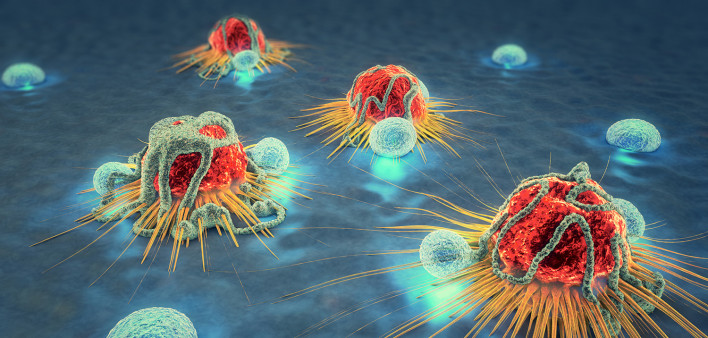An immunotherapy approach that uses immune cells with known cancer-fighting ability, known as tumor-infiltrating lymphocytes (TILs), led to complete or partial tumor shrinkage in about 40% of people with advanced melanoma or cervical cancer, researchers reported at the recent American Society of Clinical Oncology annual meeting last month in Chicago.
The two therapies—LN-144, or lifileucel, for melanoma and LN-145 for cervical cancer—involve a process known as autologous adoptive cell transfer. Naturally occurring TILs are collected from an individual’s tumor sample, multiplied in a laboratory and reinfused back into the same patient, after administration of strong chemotherapy to kill off existing immune cells to make room for the new ones. The manufacturing process generally takes 22 days, according to Iovance Biotherapeutics, the company developing the therapies.
Melanoma
Amod Sarnaik, MD, of Moffitt Cancer Center in Tampa, and colleagues conducted a Phase II study to evaluate the safety and efficacy of TIL therapy for people with inoperable advanced or metastatic melanoma (Stage III or IV) who had tried multiple prior treatments, including targeted therapies and checkpoint inhibitors (study NCT02360579).
This analysis included 66 participants who received the cryopreserved (frozen) TIL product called lifileucel; another cohort not presented here received nonfrozen TILs. In this cohort, 60% were men, the median age was 55 and 44% had melanoma that had spread to their liver or brain.
After a one-week chemotherapy conditioning regimen, patients received a single lifileucel infusion, followed by up to six doses of interleukin-2 (IL-2), a chemical messenger protein that promotes immune cell activity.
The overall response rate, meaning complete or partial tumor regression, was 38%, including 23 partial responses (35%) and two complete remissions (3%). In addition, 28 people (42%) had stable disease, while nine (14%) experienced cancer progression. The researchers noted that 81% of patients saw some reduction in tumor burden but not always enough to meet the partial response threshold.
The median time to response was about two months. After 8.8 months of follow-up, the median duration of response was not reached because most participants were still responding. Over two thirds of responders (68%) were still responding at the time of the analysis, and the longest response duration at that point was 19.8 months.
Based on these data, an additional larger cohort has started enrollment, with the aim of supporting a request for Food and Drug Administration approval, the researchers noted.
Cervical Cancer
In a related study, Amir Jazaeri, MD, of MD Anderson Cancer Center in Houston, and colleagues evaluated cryopreserved LN-145 TIL therapy for women with recurrent, persistent or metastatic cervical cancer (study NCT03108495). The treatment procedure, including conditioning chemotherapy and IL-2 administration, was the same as that of melanoma study.
This analysis included 27 treated study participants with a median age of 45. All had previously used chemotherapy, 82% had tried targeted therapies, 74% had undergone radiation therapy and 15% had used checkpoint inhibitors.
The overall response rate in this study was 44%, including nine partial responses (33%) and three complete responses (11%). In addition, 11 people (41%) had stable disease and four (15%) had disease progression. Here, 78% saw some reduction in tumor burden. Again, the median time to response was about two months, and the median duration of response was not yet reached at 7.4 months of follow-up.
In both studies, treatment was generally safe, although adverse events were common—often attributable to either the conditioning chemotherapy or IL-2. The most frequent severe (Grade 3 or higher) side effects were low levels of red blood cells (anemia), white blood cells (neutropenia) and platelets (thrombocytopenia). These side effects resolved after about two weeks as blood cell levels recovered and IL-2 was discontinued.
“The duration of response of current second-line treatments for advanced cervical cancer are in the range of three to five months and options are limited,” study co-investigator Emese Zsiros, MD, PhD, of Roswell Park Comprehensive Cancer Center in Buffalo, said in an Iovance press release. “The observation in the study of LN-145 that median duration of response has not yet been reached at a median of 7.4 months following treatment provides evidence that this therapy could provide a clinically meaningful improvement over currently available options for patients with advanced cervical cancer.”
Click here to read the melanoma study abstract.
Click here to read the cervical cancer study abstract.







Comments
Comments